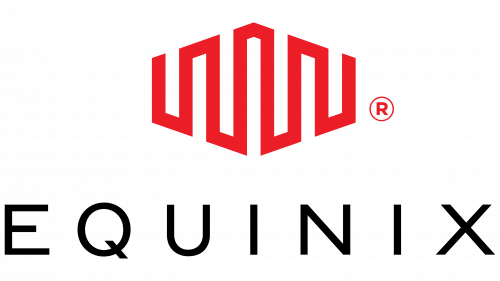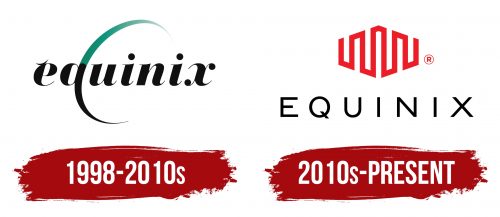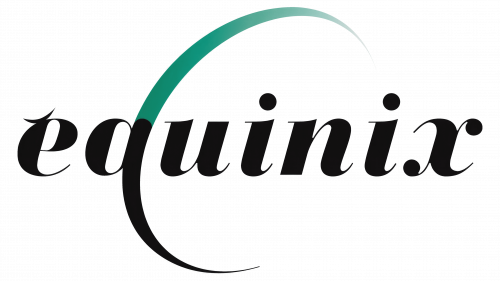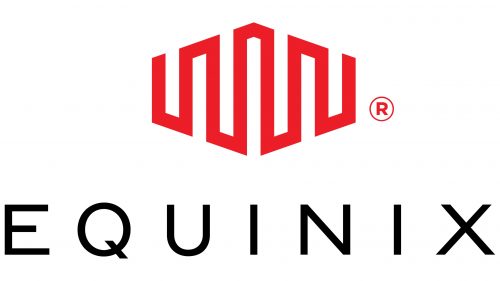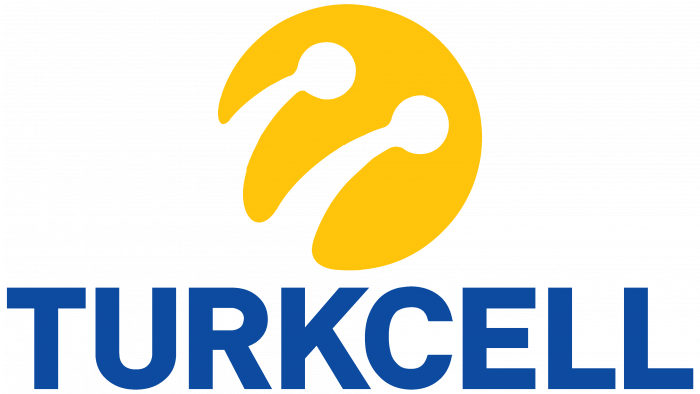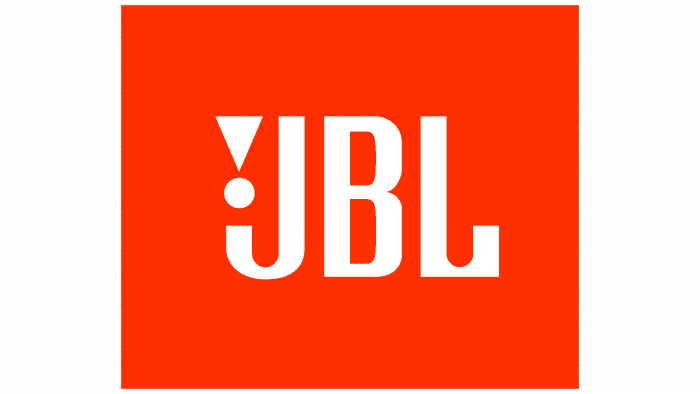The Equinix logo resembles a strong and unbreakable chain of connection formed between providers and their clients through colocation services. This symbol reflects the brand’s essence, providing a reliable infrastructure, like a powerful hub that often amplifies and distributes the signal. The emblem embodies the stability and reliability that are the foundation of the company’s operations.
Equinix: Brand overview
Equinix was founded in 1998 in Redwood City, California, by Jay Adelson and Al Avery. Their vision was to create neutral data centers that various businesses could use for hosting and internet exchange. The name was derived from “equality” and “internet exchange,” reflecting the core principle of providing all clients equal access to internet infrastructure.
In its first year, the business focused on developing a plan and securing funding, recognizing that its ambitious goals would require substantial financial backing. A major milestone came in 1999 with opening the first Internet Business Exchange (IBX) data center in Washington, D.C. The center’s high security and reliability standards quickly attracted potential customers. The company raised additional capital through a successful IPO on NASDAQ in 2000, fueling global expansion. That same year, international data centers were launched in Amsterdam and London.
The early 2000s presented challenges due to the dot-com bubble crash, but the company continued to grow, building more data centers and attracting new clients despite the tough economic environment. In 2002, Peter Van Camp replaced Al Avery as CEO, leading the business toward a more aggressive growth strategy.
Between 2003 and 2006, the firm expanded steadily, establishing data centers in the U.S. and Europe and entering the Asian market with new centers in Singapore and Hong Kong. A significant acquisition came in 2007 with the purchase of IXEurope for $482 million, adding 14 data centers in key European locations and boosting the European presence.
From 2008 to 2010, the global expansion continued, with new facilities in Brazil, Australia, and Japan. The 2010 acquisition of Switch and Data for $683 million significantly boosted market share in North America.
Between 2011 and 2015, the company focused on expanding its data center network and investing in advanced technology. In 2015, it made one of its largest acquisitions by purchasing the UK-based Telecity Group for $3.8 billion, further solidifying its European market position.
A key structural change came in 2016 when the firm transitioned into a Real Estate Investment Trust (REIT), improving its tax structure and appeal to investors. In 2017, the company expanded its North and South American footprint by acquiring 29 data centers from Verizon for $3.6 billion.
The global network grew in 2018 and 2019, with new centers in Australia, South Korea, and Finland. In 2020, despite global challenges, the company remained focused on its expansion, acquiring 13 data centers in Canada from Bell for $750 million.
In 2021 and 2022, the business continued to invest in new technologies and expanded its network to meet the growing demand for cloud and edge computing solutions.
By 2023, the firm had become one of the world’s largest operators of data centers, with a vast network spanning hundreds of locations in dozens of countries. It is critical in developing global internet infrastructure, connecting networks, cloud service providers, and businesses worldwide.
The journey from a small startup to a dominant force in the global data center industry demonstrates how strategic acquisitions, a clear vision, and adaptability to technological advancements can lead to significant success in the rapidly evolving internet infrastructure space.
Meaning and History
What is Equinix?
The company operates an extensive network of high-performance data centers that serve as the backbone of the Internet. This organization offers server hosting for enterprises and cloud services to connect and shape global digital interactions. Their platform provides companies unmatched speed and flexibility in deploying, connecting, and scaling their IT infrastructure. It also offers various interconnection services that enable parties to connect directly and privately, bypassing the public Internet to enhance security and efficiency.
1998 – 2010s
The company’s first emblem symbolizes its global ambitions. The name, written in cursive, evokes associations with journals and records, reflecting the shift from manual calculations to software-based data processing—the brand’s core service. This design choice emphasizes the technological progress and automation that the company offers its clients.
The glyph “q” in the logo is transformed into a semicircle, symbolizing the Earth, which reflects the company’s global reach. This element also hints at the colocation service, which helps providers deliver quality service to their clients. The smooth transition from black to green in the logo represents the process of growth and development that the company undergoes in its quest to expand its services worldwide. This color change also signifies the improvement in internet speed and optimization that users experience when connecting to the company’s platform.
The small stroke above the first letter “e” contrasts the large semicircle, symbolizing the company’s journey since its founding. The company’s name conveys the idea of striving for equality, neutrality, and the free exchange of Internet data. Equinix emphasizes that its services are provided without bias toward specific networks, ensuring clients can freely and impartially exchange traffic in a neutral environment. This makes it a unique player in technology and communications.
2010s – today
The Equinix logo is a dynamic and modern symbol, reflecting its global operations and technological achievements. The geometric zigzag shape at the top of the logo resembles the form of a planet, as if it is wrapped in a network of internet connections. This element symbolizes the company’s vast reach and ability to connect people, organizations, and data worldwide. The geometric lines have no beginning or end, representing Equinix’s endless possibilities and growth potential.
The visual mark’s red color conveys speed, energy, and the brand’s innovative spirit. This color emphasizes the rapid data transmission and reliability that the company prides itself on in the tech world, where every second matters; red is the perfect choice for a brand that promises fast and secure connections.
The lower part of the emblem is presented in a thin, minimalist font. The capital letters, with wide spacing between them, create a sense of the company’s vast network and reach. Each letter seems to be made of thin wires, symbolizing the technical nature of the business and its work with data. The wide spacing between the characters hints at the company’s global coverage and presence, from the Americas to Asia, Europe, Australia, and the Middle East.
This emblem perfectly reflects the essence of Equinix — a provider of global infrastructure solutions for the internet. It speaks to the high speed, reliability, and limitless opportunities for users and businesses that extend beyond national borders and continents.
